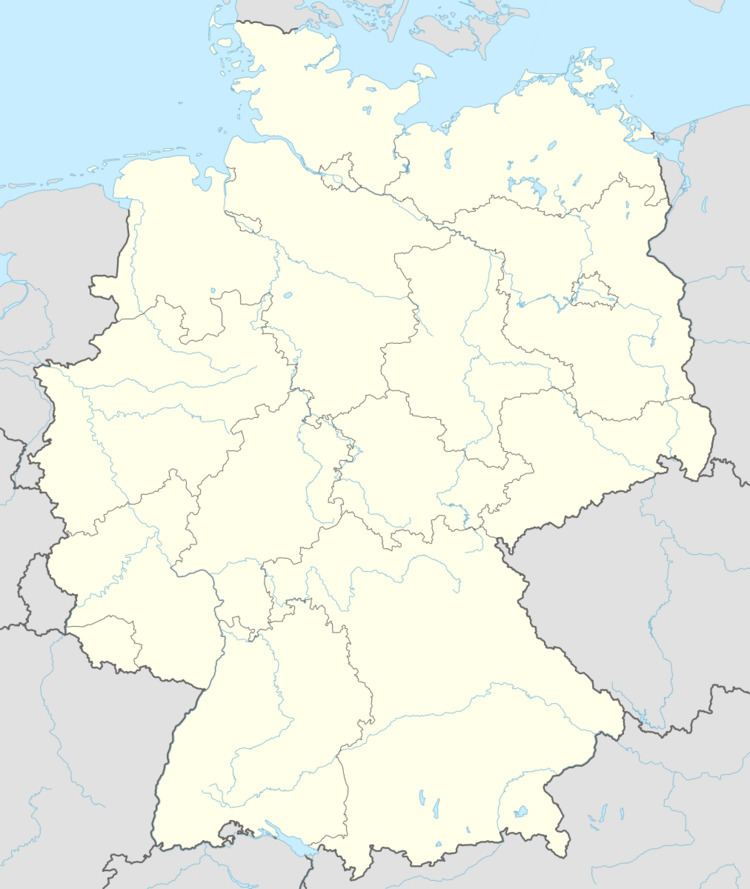Time zone CET/CEST (UTC+1/+2) Area 18.63 km² Local time Monday 6:44 PM Dialling code 06242 | Elevation 89 m (292 ft) Postal codes 67574 Population 8,228 (31 Dec 2008) Postal code 67574 | |
 | ||
Weather 18°C, Wind E at 8 km/h, 25% Humidity | ||
Osthofen is a town in the middle of the Wonnegau in the Alzey-Worms district in Rhineland-Palatinate, Germany. Since 1 July 2014 it is part of the Verbandsgemeinde (a kind of collective municipality) Wonnegau. Osthofen was raised to town on 24 October 1970.
Contents
- Map of 67574 Osthofen Germany
- Location
- History
- Town council
- Mayors
- Coat of arms
- Buildings
- Regular events
- Economy and infrastructure
- Transport
- Winegrowing
- Established businesses
- Public institutions
- Sons and daughters of the town
- Famous people associated with the town
- References
Map of 67574 Osthofen, Germany
Location
The town lies in Rhenish Hesse where the river Seebach, a very short river that rises in neighbouring Westhofen and flows for only 9 km, empties into the Rhine.
History
Archaeological finds have established that the Osthofen municipal area was already settled at least four thousand years ago. The town had its first documentary mention in the Lorsch codex as Ostowa in a document dated to 784. It is believed that Osthofen was founded by people from either the now amalgamated village of Mühlheim or the Merovingian royal palace that once stood in Worms-Neuhausen.
On Osthofen’s Goldberg (mountain), a chapel to Saint Remigius might have been built as early as the 6th century. This is where the first major estate was, which by 1195 had grown into an Imperial castle. In Mühlheim, the Knights Templar likewise built a castle in 12/15.
From 1933 to 1934, the city was home to a concentration camp which provides the subject for the novel "The Seventh Cross" by Anna Seghers.
Town council
The council is made up of 24 honorary council members, who were elected at the municipal election held on 7 June 2009, and the mayor as chairman.
The municipal election held on 7 June 2009 yielded the following results:
Mayors
Coat of arms
The town’s arms might be described thus: Sable a lion rampant Or armed, langued and crowned gules, issuant from dexter chief the sun and in an arc from dexter to middle base three mullets, all of the second.
The town’s earliest seals come from the 14th century, but they show a crane under a cross, a composition of unknown meaning. The current arms are first found on seals from the 16th century, and the composition has not changed since. The arms were officially granted the town in 1651, and once again in 1959. The sun and stars (or heraldically, mullets) are canting charges, as they are meant to suggest the direction “east”, which is the first part of the town’s name, the German word being Ost(en). The lion is the Palatine Lion, recalling the town’s long history under Electoral Palatinate’s rule.
Buildings
Regular events
From 1949 to 2013, the Wonnegauer Winzerfest (“Wonnegau Winemakers’ Festival”) was held yearly in Osthofen. Among this days-long event’s highlights were a great parade, the crowning of the Wonnegau Wine Queen and the traditional Monday wine tasting.
Economy and infrastructure
Osthofen is a state-recognized tourism centre, and under state planning also identified as a lower centre.
Transport
Osthofen has at its disposal a railway station with a connection to the Mainz–Ludwigshafen line. Formerly there were connections to the Osthofen–Rheindürkheim–Guntersblum line (on which there is still goods traffic as far as Worms-Rheindürkheim), the Osthofen–Westhofen line (locally known as the Gickelche) and the Osthofen–Gau-Odernheim line. The last two have since been torn up.
Nearby is also an Autobahn interchange onto the A 61, and towards the Rhine lies Bundesstraße 9.
Winegrowing
Osthofen belongs to the Wonnegau winegrowing zone in Rhenish Hesse. Within the town, 35 winegrowing businesses are active, and the planted vineyard area amounts to 465 ha. Some 68% of the wine made here is from white wine varieties (as at 2007). In 1979, there were still 116 such active businesses, but the planted vineyard area amounted to only 429 ha.
Established businesses
Osthofen is headquarters of the malting firm GlobalMalt.
Public institutions
The town is the location of the former Osthofen concentration camp, and a memorial site is found there today.
